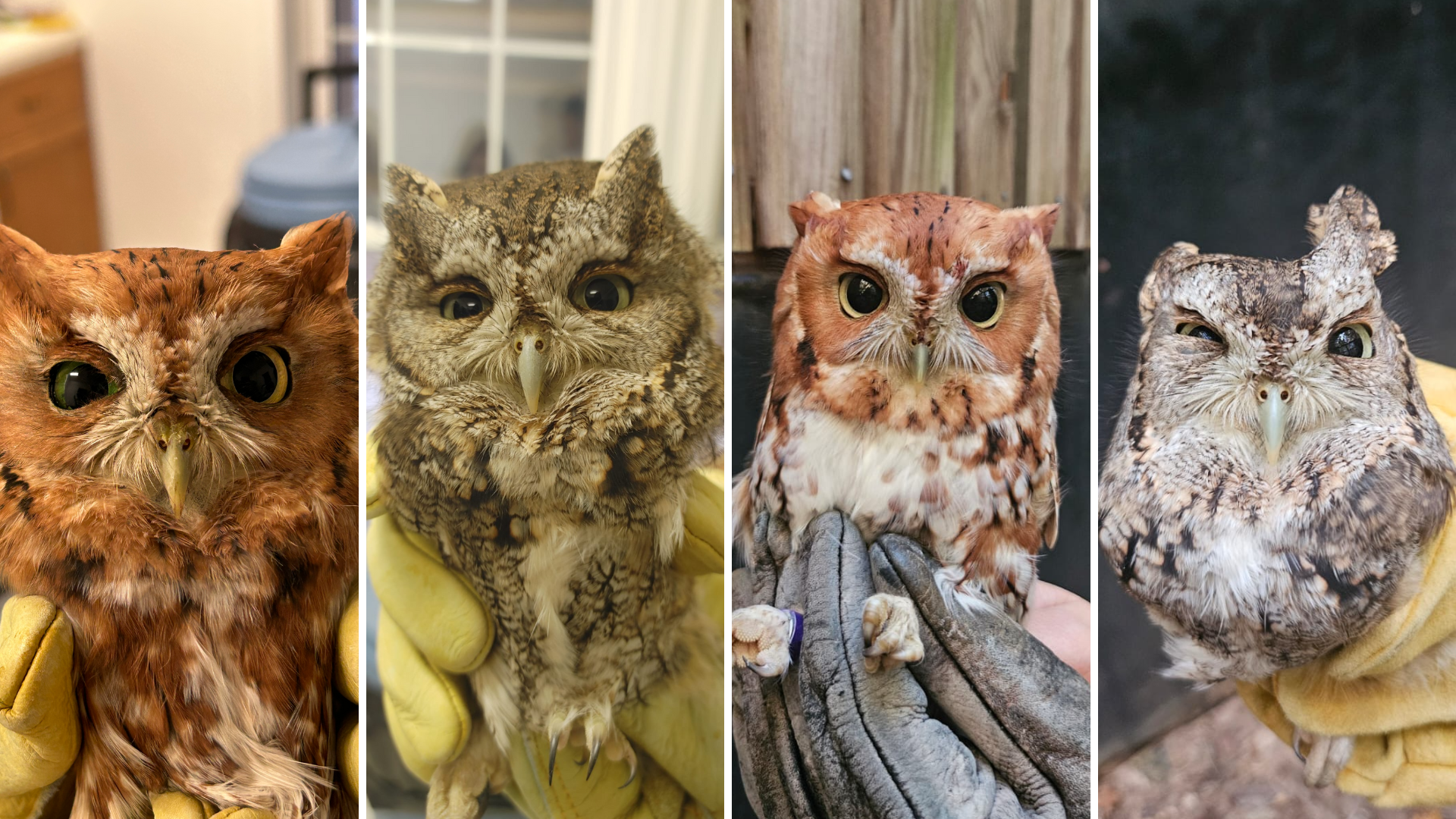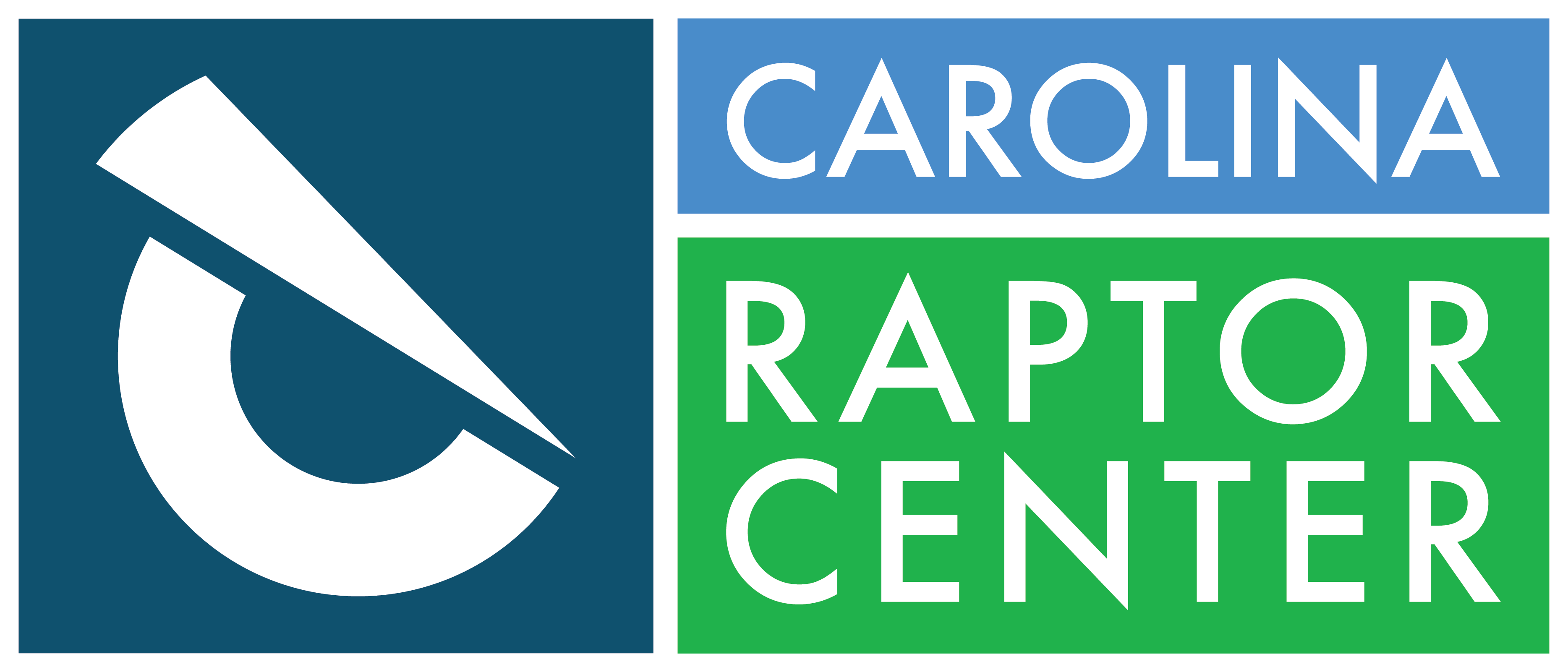
At the Carolina Raptor Center’s Raptor Hospital, we prioritize keeping our rehabilitating birds in perfect feather condition. However, feather damage can sometimes be unavoidable during the recovery process. For Patient #26380, a young Cooper’s Hawk, this was precisely the case. While recuperating from emaciation, she suffered damage to her tail feathers and several primary flight feathers—critical structures for flight that enable lift, thrust, drag, stability, and control. Without these feathers, survival in the wild is impossible.
To prepare this Cooper’s Hawk for release, we used an ancient yet effective practice called imping—a technique that involves transplanting donor feathers to restore flight capability.
What Is Imping?
Imping, short for “implanting,” is a technique with origins dating back to the 1240s, first documented in The Art of Falconry by Emperor Frederick II. This practice, while ancient, remains a cutting-edge solution for rehabilitating birds with damaged feathers. The process involves replacing broken feathers with healthy donor feathers.
Birds naturally replace their feathers through molting, which occurs once a year for Cooper’s Hawks, typically during the summer. Without imping, our patient would have needed to remain in care for nearly a year until her next molt. Fortunately, imping allows us to restore her feathers immediately, enabling a much quicker return to the wild.
Because feathers are made of keratin—like human hair and nails—this process is painless for the bird.

Step-by-Step Guide to Imping
The imping process requires skill, precision, and a deep understanding of feather anatomy. Here’s how our expert team restored the Cooper’s Hawk’s flight capability:
- Clipping the Damaged Feathers: We start by trimming the broken feathers at the base of their shafts.
- Selecting Donor Feathers: Choosing the right donor feathers is critical. We match the size (length and width) to the patient and ensure symmetry, as each feather plays a specific role in flight.
- Hollowing the Feather Shafts: Using small drill bits, we carefully hollow out the pith of the clipped feather shafts and the donor feathers to prepare them for connection.
- Creating Imping Needles: Custom imping needles, made by whittling bamboo skewers, are crafted to fit perfectly into both the donor and patient feathers.
- Assembling the Feathers: Before using adhesive, we test the alignment to ensure the donor feathers are positioned correctly.
- Gluing the Donor Feathers: A quick-drying epoxy is applied to secure the imping needles inside the donor feathers.
- Final Assembly: The needles are then glued into the patient’s feather shafts, completing the process.

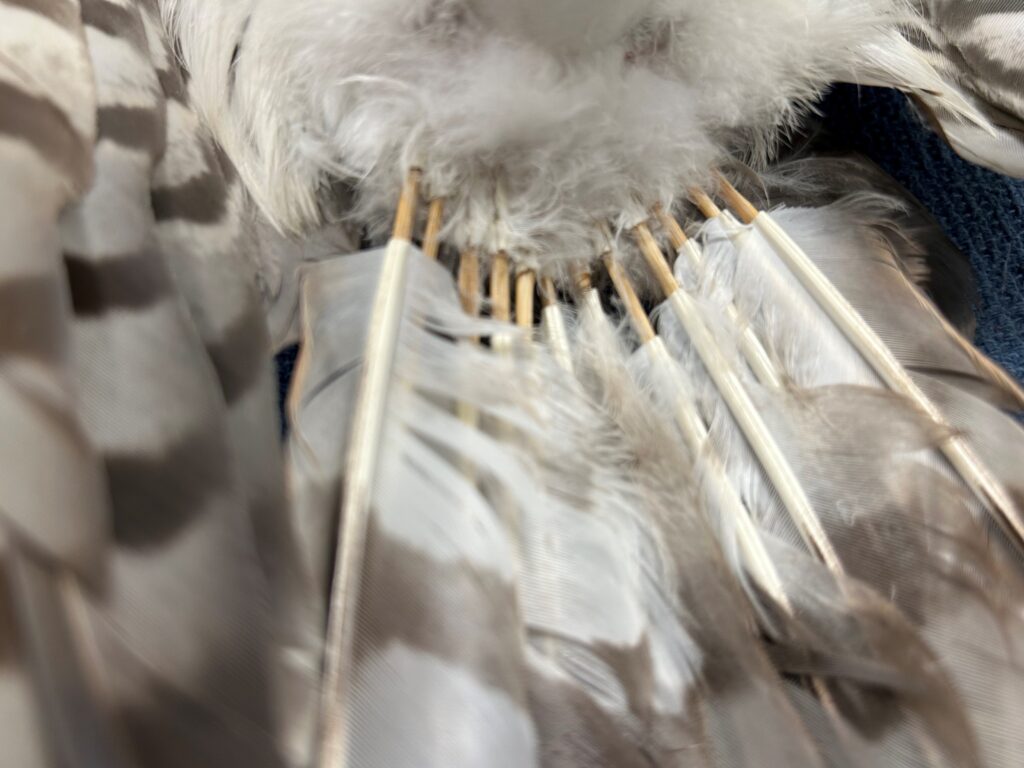
Success Story: A Cooper’s Hawk Takes Flight
The results of imping are remarkable. Our Cooper’s Hawk patient regained full flight capability after the procedure and was successfully released in Huntersville on September 6, 2024. She will keep her donor feathers until her next molt, when her body will replace them naturally with brand-new feathers.
This successful rehabilitation story underscores the importance of both ancient techniques and modern expertise in wildlife care. Imping is just one of the many ways our team works tirelessly to give birds a second chance at life in the wild.
More Success Stories:
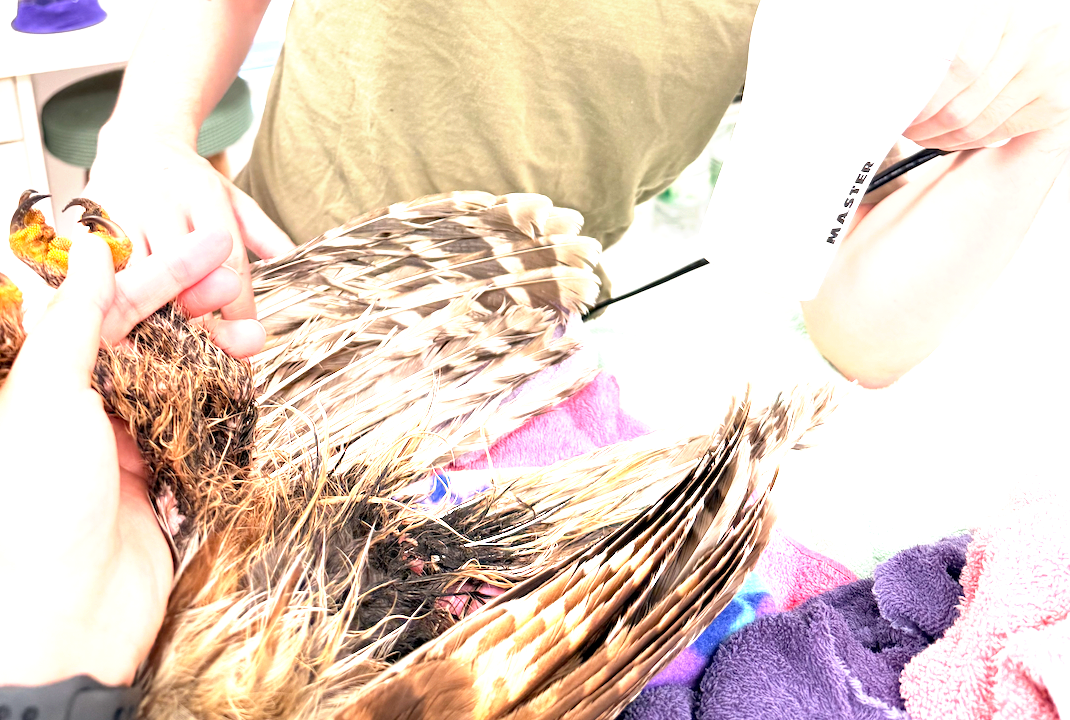
A Sticky Situation: Rescuing a Barred Owl from a Glue Trap
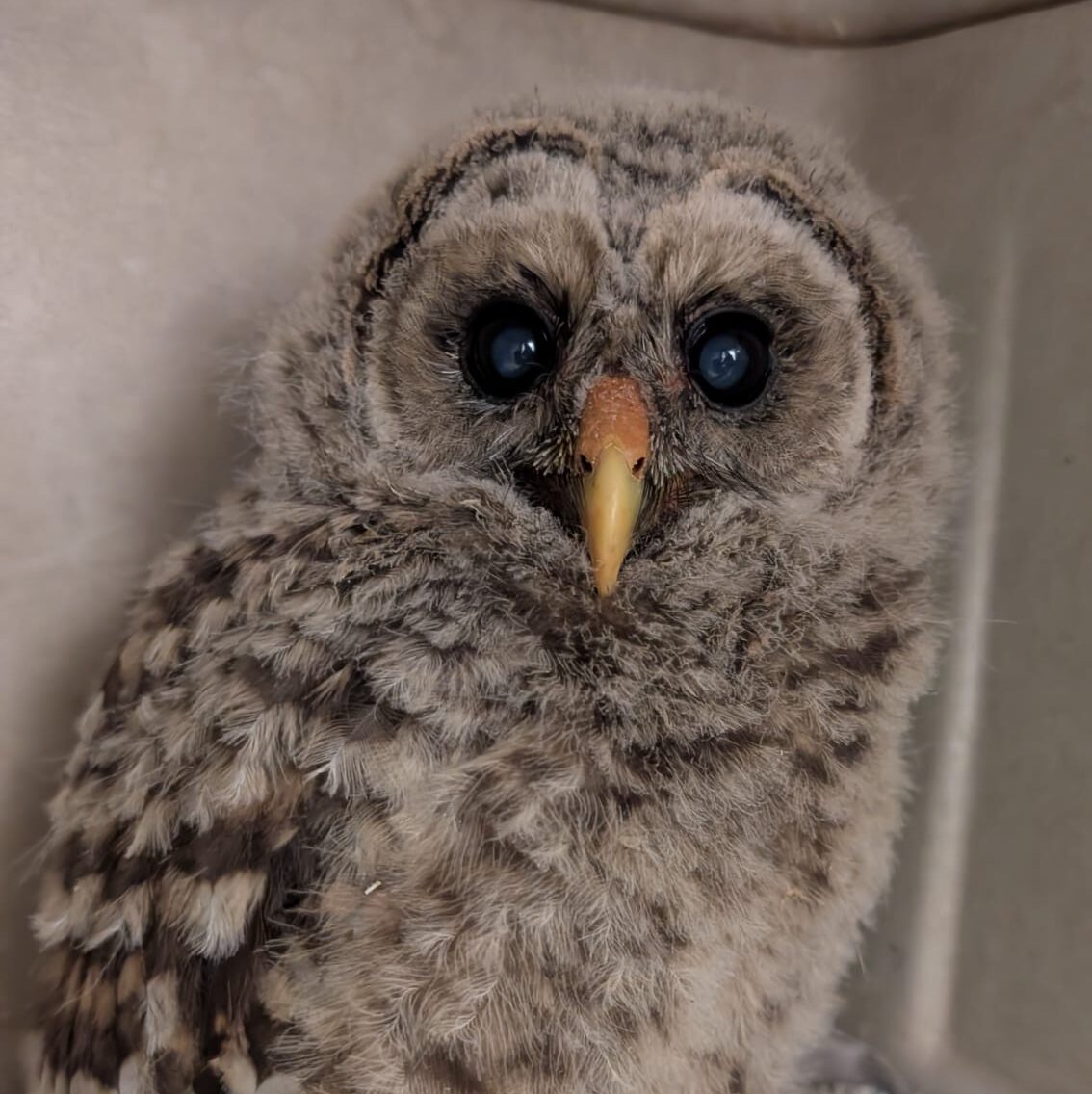
Rescued Barred Owl Nestling on the Road to Recovery
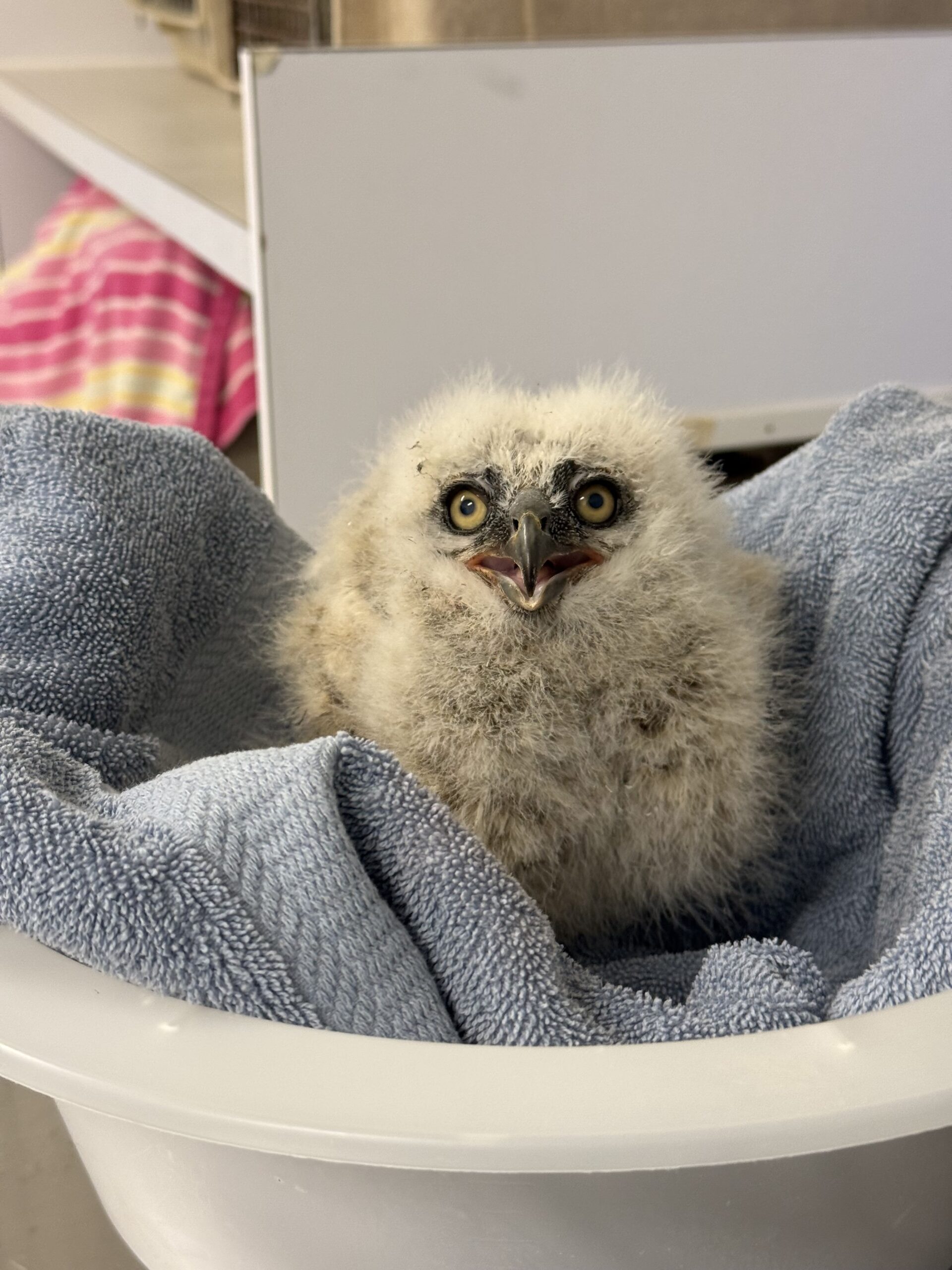
First Baby Owls of the Year
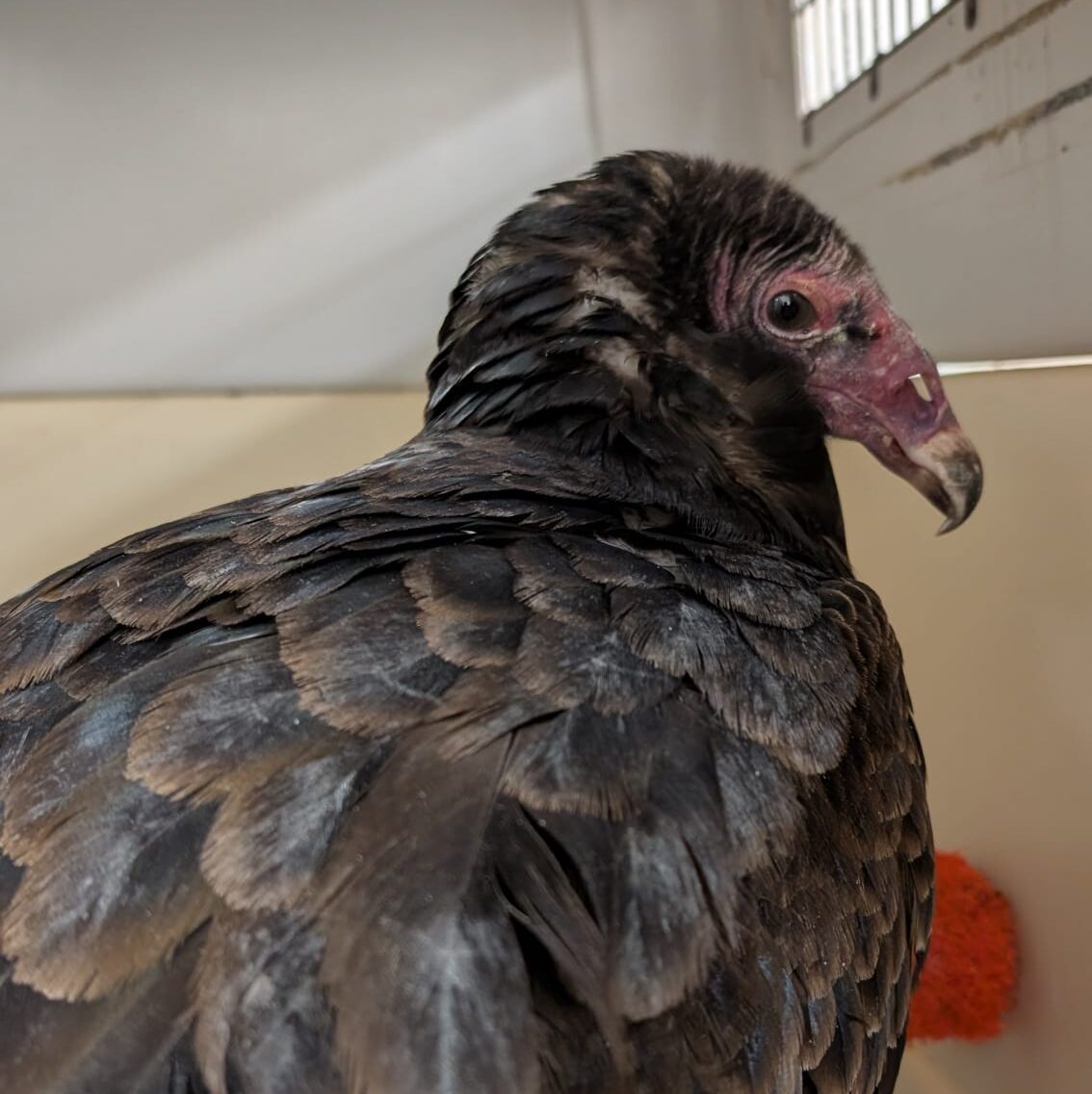
Saving a Scavenger: Treating a Turkey Vulture for Lead Poisoning
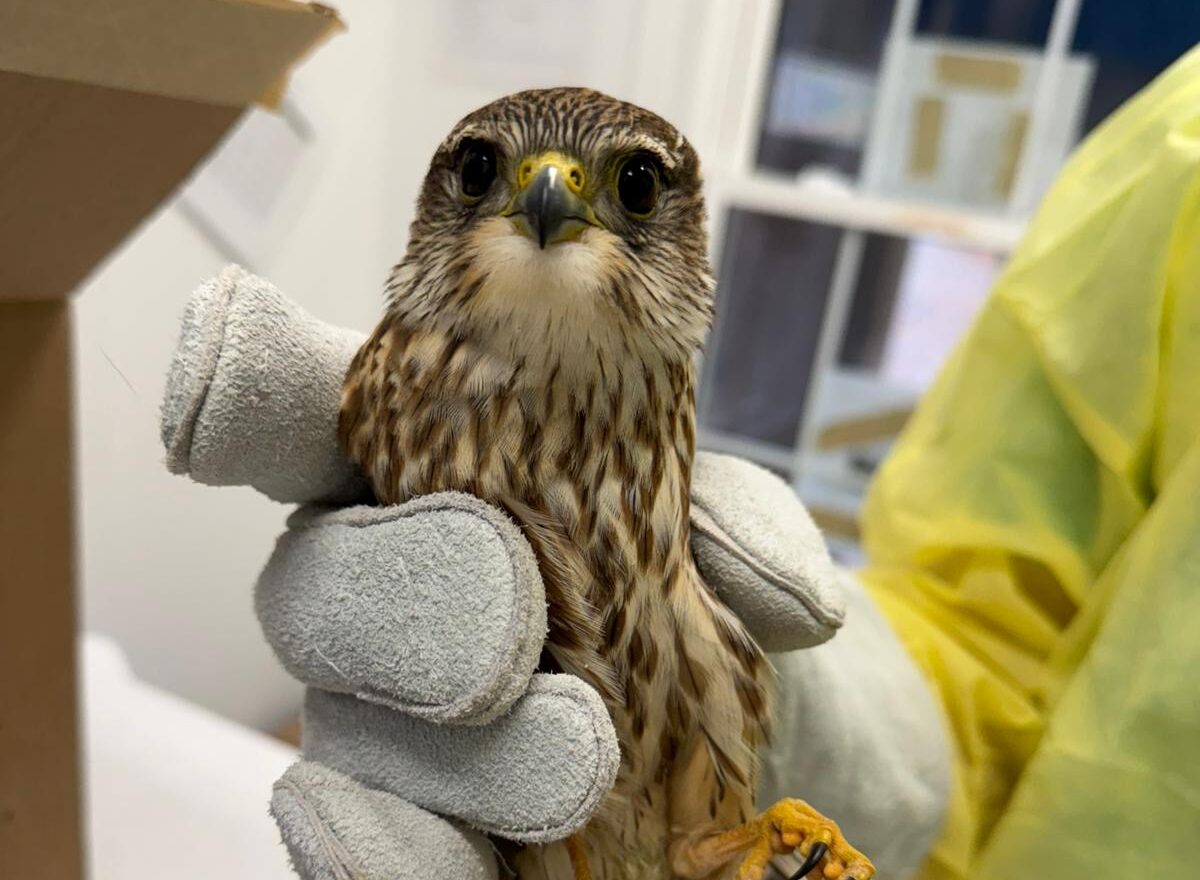
Rare Raptor Rescue: Caring for a Merlin at Our Raptor Hospital
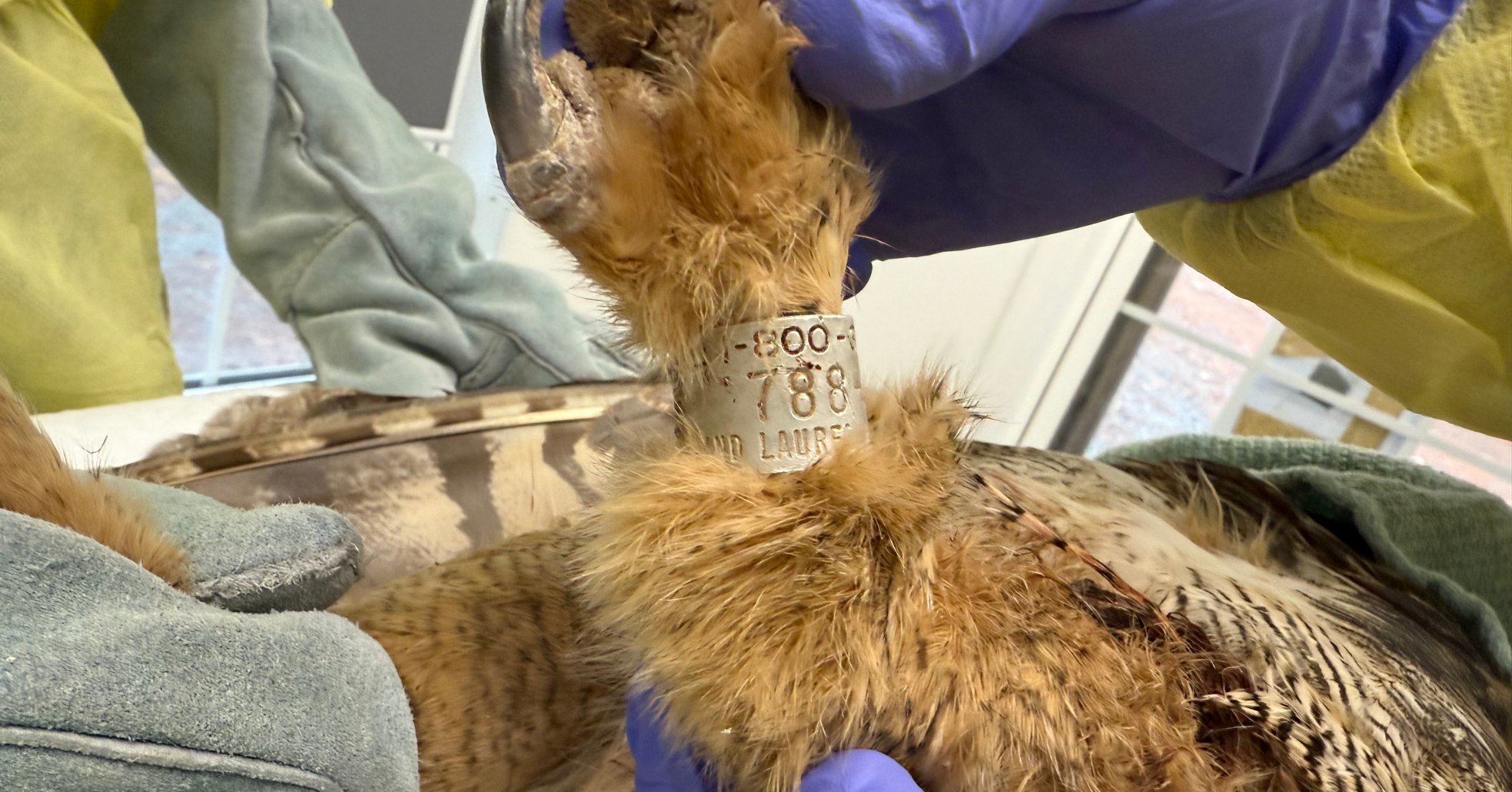
How Bird Banding Helps Advance Raptor Rehabilitation and Conservation
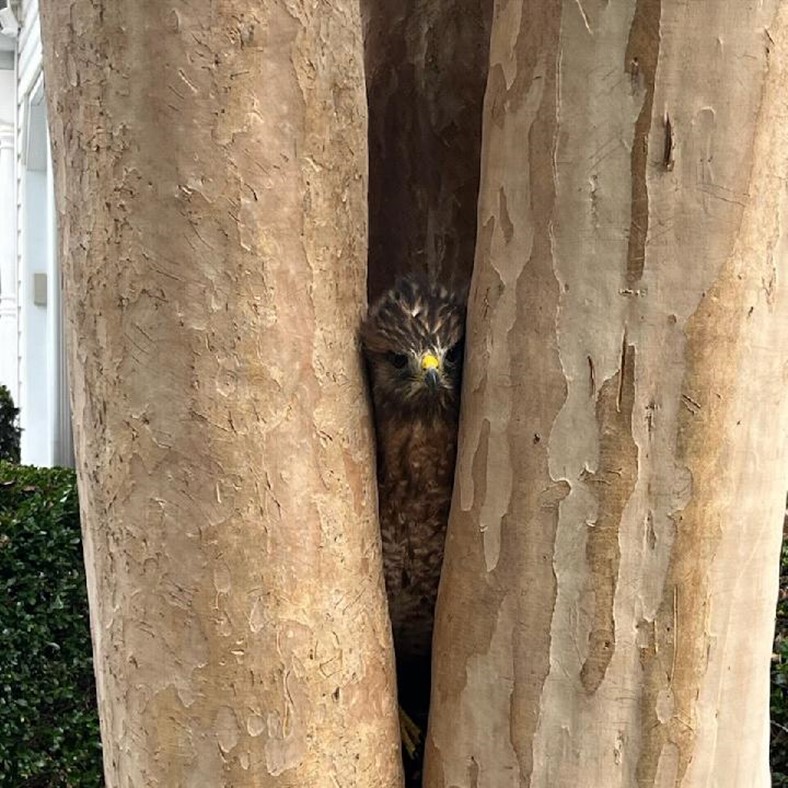
A Hawk Stuck in a Tree?
